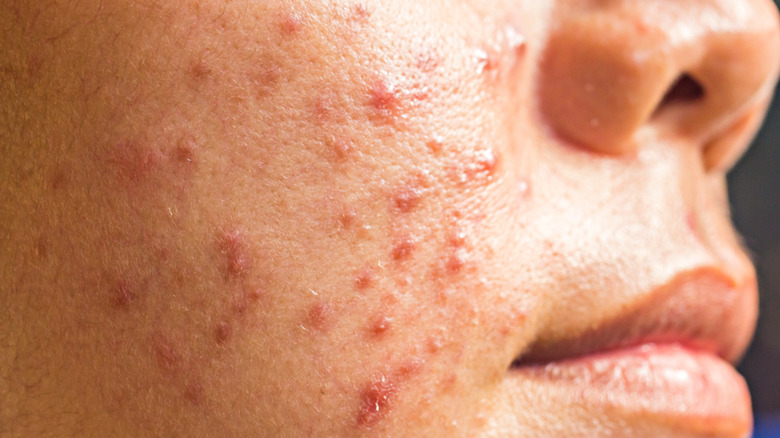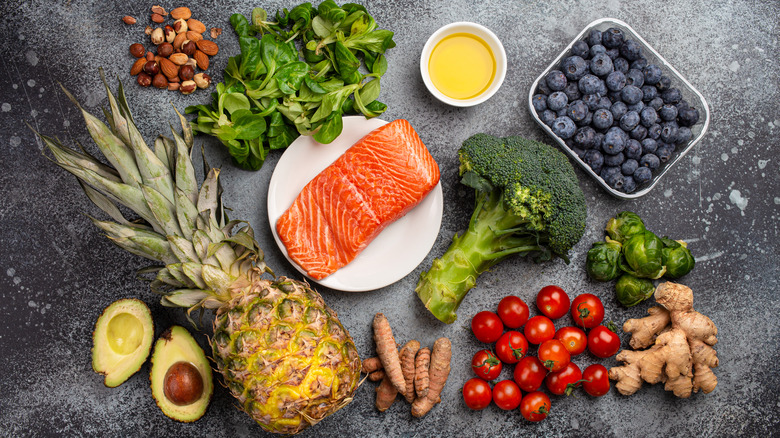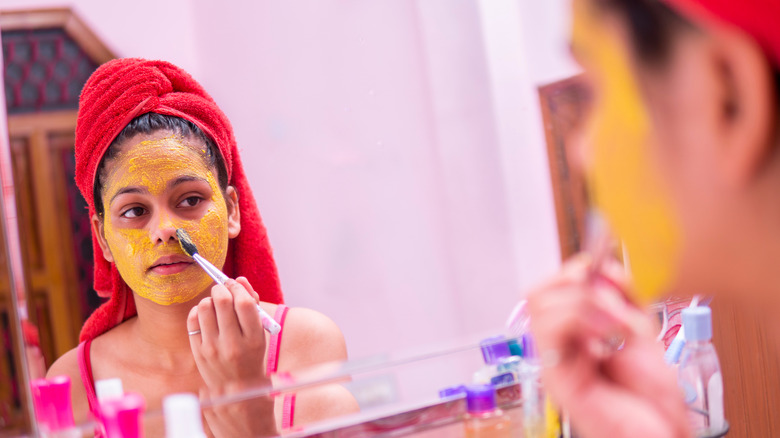How To Quickly Reduce The Appearance Of Cystic Acne
Struggling with cystic acne? You're not alone. Also known as severe acne, this painful skin condition affects about 1% of women and 3% of men worldwide (per the Journal of Clinical and Aesthetic Dermatology). Sufferers often experience anxiety and depression, as well as ongoing stress. Rose Hal, a young woman living with cystic acne, told Vocal that her condition led to social isolation, poor self-esteem, and feelings of insecurity.
This inflammatory skin disease is caused by bacteria and sebum buildup in the pores, explains the Cleveland Clinic. It typically causes painful, fluid-filled cysts that can reach the size of a dime. These bumps usually appear on the face, but you may also have them on your chest, back, arms, or other body areas. Teenagers, menopausal women, and individuals going through stressful events are more likely to develop cystic acne. Genetics may play a role, too.
Treatment depends on the severity of your condition and may take three months or longer to work. Chances are, your doctor will prescribe a combination of retinoids, salicylic acid, antibiotic ointments, and other topical drugs. In some cases, dermatologists may recommend birth control pills or steroid injections, notes the Cleveland Clinic. Meanwhile, there are a couple of things you can do to bring down the swelling and reduce the appearance of cystic acne in no time.
Tweak your diet to prevent and reduce inflammation
Certain foods can trigger inflammation and worsen acne. For example, milk and dairy may affect your hormone levels and promote the appearance of pimples, according to 2016 research published in Advances in Dermatology and Allergology. Sugary foods tend to increase insulin levels, which in turn can boost sebum production and cause acne breakouts. Perhaps not surprisingly, a diet rich in fiber, healthy fats, and antioxidants may reduce acne lesions and swelling. Zinc, an essential mineral, appears to be effective against inflammation and Propionibacterium acnes, the bacteria responsible for acne development.
The above review doesn't specifically mention cystic acne, but researchers agree that some foods are more likely to trigger breakouts than others. Based on these findings, they recommend starting an elimination diet and writing down what you eat. This approach would allow you to identify your triggers and determine which foods to avoid. The American Academy of Dermatology Association suggests cutting back on sugar, simple carbs, and cow's milk. Make sure your diet includes plenty of veggies, fresh fruits, whole grains, and legumes.
Olivia Cefalu, a beauty writer, has been struggling with cystic acne for years. At some point, she switched to an anti-inflammatory diet based on nuts, leafy greens, berries, turmeric, green tea, and other whole foods. Her skin started to look better after just one week, according to Very Good Light. Christian Allaire, a Vogue contributor, has a similar story — his acne cleared up almost completely after cutting out dairy.
Try these home remedies for cystic acne
Cystic acne is normally treated with topical creams and prescription drugs, such as Accutane. An earlier study published in the Journal of the American Academy of Dermatology found that Accutane, or isotretinoin, reduced cystic acne by up to 98%. Some patients had complete remission of their symptoms. The downside is that most drugs take months to work and can have serious side effects. For example, Accutane builds up in your tissues and may cause dry skin, joint pain, muscle aches, headaches, depression, and vision problems, warns the American Osteopathic College of Dermatology.
Home remedies are not as effective as prescription drugs, but they may help to some extent. Healthline suggests applying ice to the affected areas to reduce pain and swelling. Another option is to crush an aspirin tablet and mix it with water until it forms a thick paste. Apply it to your skin and rinse with warm water after a few minutes. Similarly, you can mix turmeric powder with water and apply it to your zits.
Dermatologist Jonathan Braue told the Cleveland Clinic that some of these remedies for cystic acne might do the trick. However, they are not a long-term solution and cannot replace medical treatment. Ice, for instance, may relieve pain and itching, but it won't clear up acne. Tea tree oil and diluted vinegar may help, too, says Dr. Braue. Just make sure you're aware of their potential side effects, such as skin irritation and allergic reactions.


